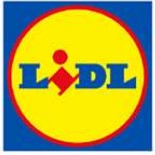Battle of the brands: Lidl -v- Tesco
Insight

In an important decision for anyone who is involved in developing and protecting brands, on 19 April 2023 Justice Smith delivered a judgment in the case of Lidl -v- Tesco. At the heart of the case was a battle between two UK supermarkets for market-share. The judge gave particularly important rulings on brand infringement in relation to the use of colour combinations in logos, but also made equally important findings on revocation for non-use of a brand and invalidity for bad faith registrations. There is also an interesting ruling on copyright infringement in relation to inferences that the court can draw where there is no direct evidence of copying.
There is much to unpack from a judgement running to 317 paragraphs (the full version of which can be found at the end of this briefing). We set out below a summary of the key findings. Note that Tesco has said it will appeal and, if permission is granted, we would expect Lidl to cross-appeal on some aspects. So, this may not be the end of the story. However, for the moment, the main impact of the court’s ruling is that Tesco is facing withdrawing the current version of its Clubcard promotion using it current logos. That will be onerous and expensive.
The claims by Lidl
At the heart of this case is a claim by Lidl for infringement of its registered trade marks. Lidl has a market share of about 7 per cent in the UK. Tesco is much larger at about 26 per cent but it has been losing market share in recent years to discounter stores such as Lidl.
There were two trade marks relied on by Lidl for its claims:
The Mark With Text (“MWT”)

This had been used in the UK since 1994 and a registered trade mark was obtained in 2011.
The Mark Without Text (“MWOT”)

This had never been used as a standalone brand in the UK, but only as part of the MWT. Four registered trade marks were obtained for this mark between 1995 and 2007. A further trade mark application covering this mark was made in 2021 but had not yet been granted by the time of trial.
It was central to Lidl’s case that the use of the MWT had come to be associated by consumers with Lidl’s key branding message that it is a discounter supermarket offering quality goods at low prices. This is encapsulated in Lidl’s marketing strapline, “Big on Quality, Lidl on Price”.
Lidl’s claims related to the brands used by Tesco, examples of which are below (“the Tesco Signs”):

and

The Tesco Signs had been used by Tesco since September 2020 in relation to and always referencing Tesco’s Clubcard loyalty scheme, which itself had been running since 1995.
Lidl alleged that the Tesco Signs used the same blue square and yellow circle and in doing so were conveying to customers that Tesco’s prices are comparable to Lidl’s. In doing so, Lidl said that Tesco were unlawfully riding on the coat-tails of Lidl’s brand and diluting that brand as a signifier of quality products at a low price and therefore infringing the MWT and the MWOT. For similar reasons Lidl said that Tesco was engaging in passing off in misrepresenting that its products share the same qualities as Lidl’s. Finally, Lidl alleged that the MWT and MWOT marks were copyright works which Tesco had copied without authorisation in creating the Tesco Signs.
The counterclaim by Tesco
Tesco denied all of Lidl’s claims. They brought their own counterclaim seeking to undermine Lidl’s registered trade mark rights on the basis that:
- No use of the MWOT had ever taken place in the five years after each of the four registrations had been obtained and they should therefore be revoked.
- In some categories of goods and services covered by the MWT and MWOT, no use had been made of those brands in the five years after each registration had been obtained and therefore the registrations should be partially revoked in that respect.
- Unless Lidl could demonstrate at the time that each registration for the MWOT was sought that it had a genuine intention to use that mark then each one should be invalidated as a “bad faith” registration.
Lidl wins on the trade mark claims
Lidl brought its registered trade mark claims on the basis only of an infringement of Section 10(3) of the Trade Marks Act. Typically, cases like this also proceed on the basis that customers will confuse the defendant with the claimant as a result of the use of similar brands (a Section 10(2) case), but Lidl chose not to pursue this. There has in fact been a recent trend for cases to fail on Section 10(2) but succeed on Section 10(3).
The requirements for Section 10(3) have been summarised in case law to mean that a claimant must show:
i. the trade mark has sufficient reputation in the UK,
ii. the defendant is using its sign in the UK,
iii. that use must be in the course of trade,
iv. the use is without the consent of trade mark owner,
v. the defendant’s sign must be identical with or similar to the trade mark,
vi. the use is in relation to goods or services,
vii. the use of the sign must give rise to a link between the sign and the trade mark in the mind of the average consumer,
viii. this has to lead to at least one of the following consequences:
(a) detriment to the distinctive character of the mark (“dilution”), or
(b) detriment to the repute of the mark (“tarnishing”), or
(c) unfair advantage being taken of the distinctive character or repute of the mark (“free riding”),
ix. the use of the sign must be without due cause.
In determining that Lidl succeeded on this claim, the Judge started by assessing the MWT against the Tesco Signs. Looking at each of the listed points above, Tesco accepted that the MWT had a sufficient reputation in the UK (i). It was also unsurprisingly agreed between the parties that the Tesco Signs had been used in the UK (ii), in the course of trade (iii), without consent (iv), and in relation to identical or similar goods and services (vi). What remained in contention was the following.
Are the Tesco Signs similar to the MWT (v)? Yes, said the Judge. This was because of the use of the common backgrounds of a yellow circle in a blue square. And this similarity was not dispelled by the use of the brand “Lidl” in the MWT and “Clubcard” in relation to the Tesco Signs. The Judge said this was supported by evidence from Tesco’s own witnesses and in disclosure given by Tesco of internal communications where concerns were raised during the development of the Tesco Signs that they were close to or reminders of the MWT. It was also supported by evidence given by two consumers who were cross examined at the trial and in a collection of feedback spontaneously volunteered by consumers to Lidl and Tesco when the Tesco campaign using the Tesco Signs went live. This collection of feedback, or "Vox Populi” as it was called, appears to have been gathered through a very thorough and careful search for evidence on social media and through comprehensive disclosure between the parties. The fact that this feedback was provided spontaneously, rather than from surveys specifically conducted for the litigation (which were also taken into account), appears to have been particularly persuasive for the Judge.
Did the use of the Tesco Signs give rise to a link between them and the MWT in the mind of the average consumer (vii)? Again, the Judge found that it did. In doing so, the Judge relied on Tesco’s own surveys carried out to assess the impact of its campaign where some consumers thought it was a Lidl campaign (origin confusion). In addition, the Judge again relied on feedback spontaneously volunteered by consumers who thought the use of the Tesco Signs meant that Tesco was matching its prices with Lidl’s, a view re-enforced by the two consumer witnesses who attended trial (price comparison confusion). The Judge also referred to Tesco’s internal communications which recognised these risks of confusion.
Next the Judge dealt with whether this had all led to a least one of three damaging consequences being suffered by Lidl (viii). The Judge found that two damaging consequences were established: Detriment to the distinctive character of the mark or “dilution” as it sometimes called (viii, a); and Unfair Advantage being taken of the distinctive character or repute of the mark or “free riding” as it is also known (viii, c).
On Detriment, the Judge accepted that it was very difficult to prove that customers had changed their behaviours as a result of the use of the Tesco Signs. However, the Judge accepted that Lidl had suffered the necessary detriment because Lidl had felt it necessary to conduct a reasonably expensive advertising campaign seeking to correct any impression given by the use of the Tesco Signs that Tesco’s prices were the same as or lower than Lidl’s.
Regarding Unfair Advantage, the Judge found that this was satisfied by reference to the benefit or advantage that Tesco had derived from the use of the Tesco Signs. Based on the earlier findings regarding the link that the average consumer made between the Tesco Signs and the MWT, the Judge said that the use of the Tesco Signs had benefited Tesco in conveying the same message as the MWT, ie that Tesco offered quality goods at low prices and that these were price matched to Lidl.
Finally, the Judge dismissed Tesco’s argument that the use of the Tesco Signs was with good cause (ix). Tesco said that the colour scheme it chose incorporated its corporate colours (the blue background) with the yellow colour in the circle often being used throughout the retail sector as having a high impact in drawing consumers’ attention to point of sale materials and as a representation of value. However, the Judge found that there was no valid reason why Tesco had selected this combination of a blue square background with a yellow circle in the middle.
Having decided that MWT was infringed by the use of the Tesco Signs it was common ground that MWOT was also infringed (subject to that mark being valid). The claim in relation to the MWOT was in fact stronger because of the absence of the brand “Lidl” in the centre of the yellow circle.
Lidl wins on the passing off claim
Lidl also brought a passing off claim, essentially on the same basis as the trade mark infringement claim. Lidl alleged that through the use of the Tesco Signs, Tesco was misrepresenting that its products share the same qualities as Lidl’s ie quality at good value. This claim succeeded on the basis that:
- Lidl had demonstrated goodwill in the MWT and MWOT (based on the evidence already referred to in the trade mark claims),
- the Judge was satisfied that a substantial number of the public were led to believe through the use of the Tesco Signs that the Tesco Clubcard price is the same as or lower than the Lidl price for equivalent goods and that this is not true, and
- Lidl had suffered damage as a result.
This is an example of one of those more unusual passing off claims where consumers are not deceived into thinking the goods or services of the defendant emanate from or are connected with the claimant. Instead, and consistent with the trade mark claim brought under Section 10(3), they are deceived into believing the defendant’s goods or services are of equivalent quality and price to the claimants.
Lidl wins on the copyright claim
The Judge first found that copyright subsisted as an artistic work in the bringing together of the yellow circle in a blue square with the brand “Lidl” within the yellow circle.
In incorporating the yellow circle within a blue square, the Judge was of the view that the Tesco Signs consisted of a substantial part of the MWT.
Tesco had access to the MWT and the inference from all of the evidence was that they had copied it in arriving at the Tesco Signs. In those circumstances, the Judge said that Tesco needed to provide a credible explanation for these similarities if there had been no copying.
Unfortunately for Tesco the evidence of its principal witness on this issue was fatally undermined when it became clear in cross-examination that an inaccurate explanation of the creation of the Tesco Signs had been provided. In particular, the role played by Tesco’s external advertising agency was significantly downplayed. The agency was not called by Tesco to give any evidence about how the process for the creation of the Tesco Signs unfolded despite it being apparent from the evidence at trial that the agency had been heavily involved. Neither Tesco’s main witness on this issue nor Tesco’s Counsel could give any credible explanation for not calling the agency to give evidence. The Judge found this “extremely surprising” and drew the inference that had the agency given evidence it would have damaged Tesco’s case on the development of the Tesco Signs. Having also considered the available evidence such as email communications between Tesco and the agency and presentations made by the agency to Tesco, the Judge concluded that the agency copied the blue background and yellow circle concept in the MWT and this was then adopted by Tesco in arriving at the Tesco Signs. Accordingly, Tesco had infringed the copyright in the MWT.
Tesco wins (in part) on the counterclaim
Tesco had some success on its Counterclaim, and it is this element of the judgment that will be of particular interest to those involved in trade mark portfolio management
First, Tesco failed in its Counterclaim to revoke the four trade mark registrations for the MWOT as a whole on the basis that there had been no use of it in the five years following each of the four registrations. The Judge found that when the MWT was used this also constituted use of the MWOT. However, Lidl conceded that the MWT had not been used across all of the goods and services contained in the trade mark specifications and in that respect consented to the revocation of the MWOT registrations regarding those goods / services where it had not been used.
Second, and perhaps more importantly, Tesco succeeded in having the four trade mark registrations invalidated. Earlier in the proceedings, this counterclaim had been struck out by the Judge. However, on Tesco’s appeal against the strike out the Court of Appeal accepted that it was arguable and remitted it back to the Judge to be heard with the rest of the issues at the full trial. Tesco’s argument was that at the time of the application for the first trade mark for the MWOT back in 1995, Lidl had no intention of using that mark in that form, ie without text in the yellow circle. Accordingly, that application had been made in bad faith. Tesco said the further applications in 2002, 2005 and 2007 were also made in bad faith because they were seeking to “evergreen” the 1995 registration recognising that the rights would be lost for non-use in each successive five year period.
The Judge agreed with Tesco and invalidated the four trade marks. In reaching this decision, it seems that the Judge formed the view that Lidl had to provide positive evidence of an intention to use the MWOT in 1995 (and on the subsequent occasions the three other applications were filed). Given the passage of time and the changes in personnel at Lidl this was not something that it was able to do.
While this may seem surprising given the failure of Tesco’s case for revocation for non-use, it reminds us that the question of bad faith will be assessed at the time a mark is filed. If you have no intention to use the mark at the point of filing, it will still amount to a bad faith filing and be at risk of revocation even if you do go on to use it. This sounds a warning to all trade mark owners to ensure that they retain whatever records they already have demonstrating a good faith intention to use a trade mark at the time of applying for it and, in future applications, that they put together a record that could be disclosed in proceedings to demonstrate their intentions should they be challenged.
This element of the judgment also serves as a warning against taking an overly belt-and-braces approach to trade mark filing. Filing a generic mark (say, a logo in black and white) to enable a brand owner to subsequently use the mark in a variety of colours in due course is unlikely to amount to bad faith. But filing a generic mark in black and white while also filing in orange and then always using the orange mark in branding, may put the generic one at risk of a bad faith finding. And, unlike revocation for non-use, there is very little you can do in practice to subsequently displace this finding (assuming you retain ownership of the main mark).
Ultimately this element of the case did not alter the overall finding of infringement by Tesco. This perhaps further reinforces the fact that there is nothing to be gained, but nor is there anything to be lost, by only seeking to register more widely than is strictly necessary for brand protection purposes.
A final point to note is that the Judge did not find that the trade mark application made in 2021 for the MWOT was filed in bad faith. The Judge took into account that it did not appear to be an attempt to “evergreen” the 1995 registration as there had been a gap of 11 years since the last such registration was obtained. In addition, the 2021 application consisted of a slightly revised colour scheme and a wider specification of goods and services reflecting that Lidl had widened the products it sells in the past 15 years or so. The Judge appears to have accepted that when making this application Lidl genuinely believed it would make use of this version of the MWOT. Assuming the application now proceeds to registration, Lidl will therefore still have a registration for the MWOT.
Conclusion
Tesco has indicated it will seek leave to appeal this decision. Permission would need to be granted by the Judge (which seems unlikely) or the Court of Appeal. The difficulty for Tesco is that much of the findings made by the Judge are based on a detailed review of the witnesses’ evidence and the facts. The Court of Appeal is seldom persuaded to overturn a Judge’s views on these matters. However, it does seem to be an important case for the Court of Appeal to consider, particularly given the findings on the rights in combinations of colours which seem to potentially provide quite wide areas of protection to brands that consist of combinations of words, shapes and colours. Indeed, supermarkets that engage in producing look-a-like products to mimic leading brands might be concerned about this. The Court of Appeal might be persuaded to say the case was determined on its unusual facts and therefore limit its impact, but without overturning it.
If permission to appeal is granted to Tesco, then it seems likely that Lidl will cross-appeal on the invalidation of its registrations for the MWOT. The Judge seems to have been driven to the ruling on this aspect by remarks made in the Court of Appeal when remitting this issue back to the Judge after the initial strike out of the counterclaim was overturned. It would perhaps give the Court of Appeal an opportunity to re-consider the position in light of the Judge’s interpretation of what it had said.
The full judgment is here.
If you require further information about anything covered in this briefing, please contact Ian De Freitas, Jane Randell, or your usual contact at the firm on +44 (0)20 3375 7000.
This publication is a general summary of the law. It should not replace legal advice tailored to your specific circumstances.
© Farrer & Co LLP, April 2023







